Should You Change Your Chiropractic Career? A Strategic Look at Transformation

Career shifts are significant crossroads in our professional lives. In an industry as personal as healthcare, particularly chiropractic, these decisions hold even more weight. The question resounding in many chiropractors’ minds is whether to stay the course or change direction entirely.
The experts at MyChiroPractice, well-versed in working with chiropractors navigating this very choice, have distilled the process into a clear guide. Let’s walk through the signs that may indicate a need for a career shift, the steps to evaluate it, and the final decision-making considerations.
Recognizing When It’s Time for a Change
1. Analyzing a Declining Patient Base
Your patient base is the heartbeat of your practice – it’s essential to track its health. If you observe a steady decline, it’s a crucial red flag that something within your practice or the external environment is amiss. Start by looking at year-over-year numbers, then drilling into the reasons behind the downturn. Is it seasonal, suggesting a cyclical trend, or is there a broader issue that may need your attention?
Strategies for Analysis
- Monthly patient tracking with reasons for visits.
- Conducting surveys to understand satisfaction and lapsing patients’ reasons.
- Comparing demographic shifts in your locality to your patient profiles.
2. Identifying Stagnant Growth
Financial indicators might be the most tangible evidence of a practice’s performance. If growth has flatlined, several factors might be in play. For instance, is there a lack of new patient acquisition due to ineffective marketing strategies? Alternatively, maybe you’re not retaining patients for optimal care plans. It’s all about identifying the bottle-necks and addressing them strategically.
Suggested Growth Indicators
- Total revenue per quarter, segmented by recurring and new clients.
- Retention rate of scheduled follow-up appointments.
- Monitoring the competitive pricing landscape.
3. Self-Assessment of Personal Satisfaction
Are you feeling the same excitement about your practice as when you first started? Over time, burnout or disengagement can set in. Take time for introspection and note whether the day-to-day challenges still inspire you. If not, it might be the right time to explore other avenues.
Indicators of Professional Satisfaction
- Periodic self-checks on enthusiasm and passion levels.
- Assessing how you feel after patient interactions.
- Reviewing your satisfaction through the lens of personal development and growth within your practice.
4. Evaluating Financial Considerations
Financial health is a dual-pronged consideration. Not only should your practice be economically sound, but your personal financial goals also need attention. Assess whether your practice is in a good position to weather a shift, or perhaps identify alternative roles that align better with your financial aspirations.
Financial Self-Check
- Regular review of practice expenses and revenues, looking for patterns.
- Analyzing personal financial goals in the context of current and potential future earnings.
- Seeking advice from financial consultants on the long-term profitability of your practice.
5. Keeping Up with Market Trends and Competition
The healthcare landscape is rapidly changing. From technological breakthroughs to new care paradigms, staying informed is not just a should-do, it’s a must-do. Keep a close eye on industry publications, attend relevant workshops, and network with peers to gauge how well your practice is adapting to the shifting sands of the market.
Monitoring the Market Pulse
- Regularly analyzing market research reports specific to chiropractic industry.
- Networking with industry leaders and learning from their experiences.
- Assessing your practice’s flexibility in adapting to potential changes.
The Evaluation Phase: Is a Career Shift Viable?
1. Conducting a SWOT Analysis of Your Practice
Employing a structured approach like the SWOT analysis (Strengths, Weaknesses, Opportunities, Threats) can provide clarity on your practice’s present condition and potential trajectory. It’s an effective way to map out what a shift in career might mean and to explore the possible alternatives.
SWOT Method Applied
- Objective examination of internal processes and offerings.
- Assessing areas where competitors outshine your practice.
- Identifying opportunities within the industry’s current shifts.
- Determining potential threats, such as rising competition or legislative changes.
2. Exploring Alternative Career Paths
Begin by researching the roles and industries that interest you. Find out what qualifications or experiences you’ll need to make the transition. Consider shadowing professionals in these fields or taking on part-time roles for a firsthand look at the work.
Research and Preparation
- Engaging with career coaches to explore options.
- Investigating necessary preparations, such as additional education or certifications.
- Reaching out to professionals in your desired field for mentoring or job-shadowing opportunities.
3. Networking and Seeking Advice
You’re not the first, nor the last, to consider a change in career. Leverage the knowledge and advice from those who have navigated similar waters. Prioritize building a network of mentors, peers, and industry contacts who can offer insights and support.
Proactive Networking
- Attending industry conferences and joining professional associations.
- Joining online forums and participating in discussions.
- Identifying and reaching out to potential mentors in your network.
Making the Decision to Stay or Shift
1. Balancing Personal and Professional Goals
Your career shift should align with your broader life goals. Consider whether the timing is right personally, and whether the potential stress of a transition is manageable given other life factors. Reflect on how a new career might impact your family, lifestyle, and well-being.
Weighing the Balance
- Making a list of non-negotiable personal goals and seeing how your potential career shift would help achieve them.
- Seeking input from family and trusted advisors.
- Considering the short-term sacrifices for long-term gains.
2. Planning the Transition
If the scales tip in favor of a career shift, meticulous planning is your ally. This might include setting a clear timeframe, securing necessary education or training, defining your target roles and companies, and considering the financial aspects of the transition.
Detailed Transition Planning
- Developing a step-by-step action plan with deadlines.
- Researching and setting realistic expectations for the transition period.
- Creating a financial safety net for the transition phase.
Final Thoughts and Encouragement
The decision to change your career from chiropractic to something else is both personal and strategic. It’s important to take the time to reflect, analyze, and prepare for what could be a major transformation. Seek professional consulting to assist you in making an informed decision about your next steps. Remember, the beauty of a career in healthcare is its ability to be just as nurturing to the practitioner as it is to the patient. Whether you choose to change course or stay the path, the decision is yours and yours alone. Your professional legacy is a canvas on which to paint the story of your evolution.






